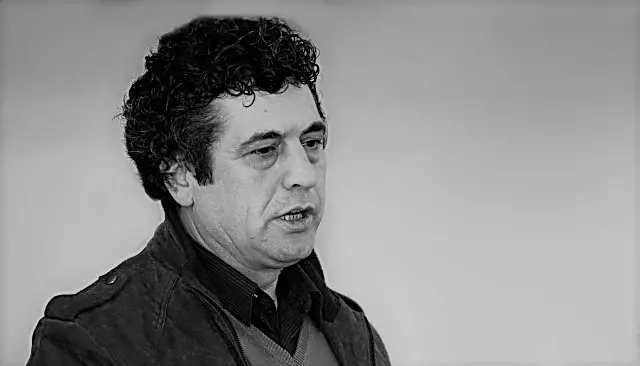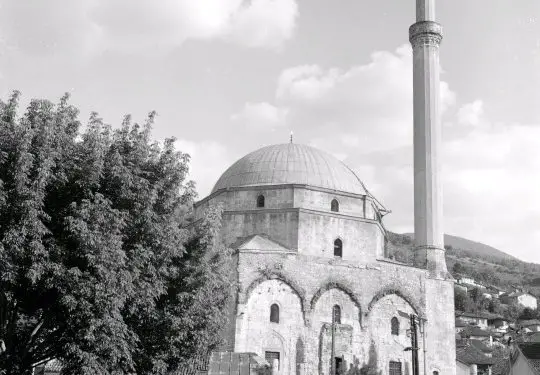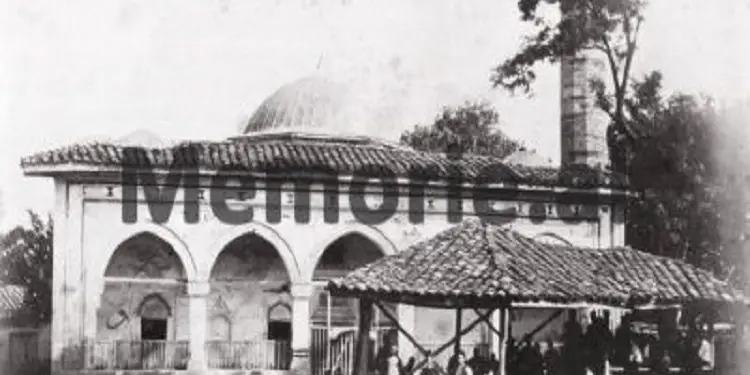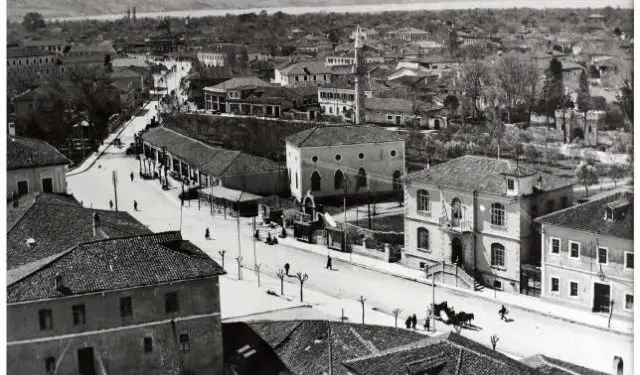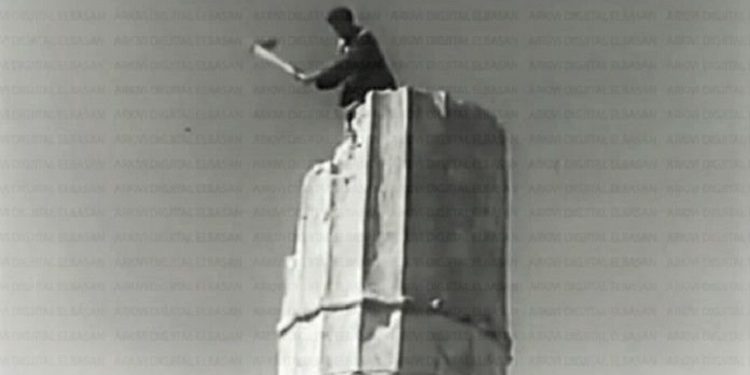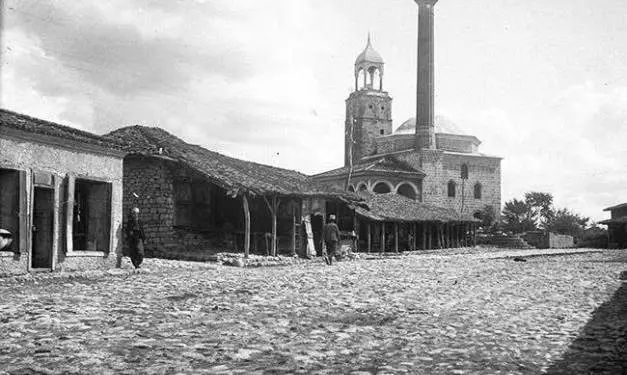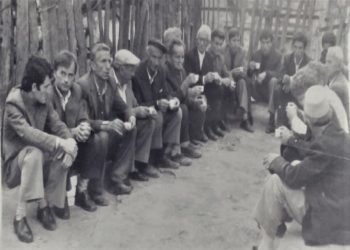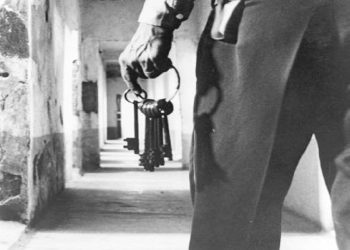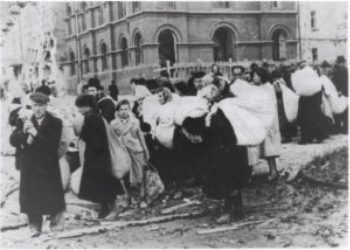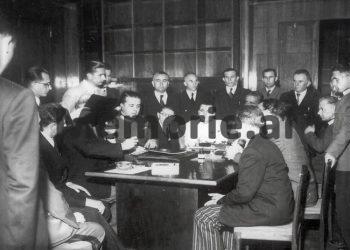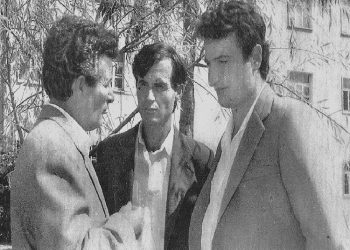By Dr. Agron Tufa
Memorie.al / 1. In these two decades after the fall of communism, there have been repeated attempts to blame the Muslim hierarchs and in general, the tradition of the Muslim faith as a helper and collaborator of communism. Sometimes in solitary solos and sometimes in chorus, these voices, perhaps coming from the culture, the intelligentsia and the media, have tried to install a strange image, that supposedly the Muslim tradition has been seen with more tolerance by the communist government and that the dictatorship has spared them supposedly these believers, leaving them untouched. There are even individuals who go too far, asserting at home and abroad that communism itself was a Muslim product.
Such forms of extreme fundamentalism poison, first of all, one of the virtues of the tolerant culture of Albanian Muslims, their patriotic and patriotic tradition and contribution, as citizens concerned about the fate of the nation, and, finally, they are baseless slanders, which apparently, they aim to install an incriminating image on the majority of the Albanian population. The truth is quite different. Communism was not and can never be a Muslim invention or product.
The religion of Muslims has nothing to do with communism and its form of Bolshevism either as a practice of exercising power or as a worldview philosophy. Even long before communism took root in Albania, the first warning was given in the most alarming way by the late scholar, patriot and anti-communist, Hafiz Ali Korça, in 1925 with the book published at the time “Bolshevisma a ç “the destruction of humanity”. Among other things, Hafiz Aliu in this book states:
Bolshevism never agrees
With the knowledge of Muhammad
The keys will have the fight
Wide on the Day of Judgment.
I think it is unfair and divisive the idea that communism was invented by this or that religion, since the very inhumane reality of communist doctrine applied the same repressive, liquidating, terrorizing methods to Albanian Catholics and Orthodox, as well as to Muslims, until in the complete official prohibition of faith in our country.
Communism is not and cannot be a Muslim, Catholic or Orthodox invention. Even if the first superficial facts may lead us into the error of thinking that the Red Empire of Evil extended geopolitically in its vast part in the countries of the Orthodox religion, this should be seen as a historical disaster, not as a criminalization of a faith of assigned.
- The disappearance of religion was essential for the injection of communist dogma and, therefore, for the creation of the “new man”. However, the communists knew that in the vast majority of the population, and even in a part, however limited, of the party members, religion occupied a very important place, “… thus hindering their further development in the field of worldview materialist of the party on the phenomena of nature and society”:
“There are still communists – especially peasants – who fast during the month of Ramadan or during Lent, who circumcise their sons, or baptize their children in church.” Religion was presented everywhere as an inhibitor of the rhythms of civilization and social emancipation, therefore, according to the communist leaders, the only way for social progress was liberation from its dogma. In the service of this idea, dozens of propaganda books were published, where religion was described as “…a very heavy burden on humanity and a convenient weapon in the hands of the exploitative ruling classes to keep the religious workers in the dark, obedient, ordered” .
Such assertions are nothing but vulgarizations of the Marxist invitation to destroy the links between religion and models of rule and exploitation. Marx rejected his family’s Jewish traditions and argued that the “great desire for a happy life in the afterlife” could be considered part of an ideology that prevented workers from striving in this world for a just social order and not exploitative. Therefore, according to him, religion was “opium for the people”, in other words, a group of dogmas, which hid the realities of class struggle and exploitation.
The following list, however partial, best illustrates this tendency: M. Plisecj, The Origin of Man (1946); M. Melinkov, Vatican Capitals (1947); M. Melinkov, The Vatican and the Problems of Post-War Reconstruction (1947); P. Popov, On Vatican Policy (1947); I. Sbrgajev, Science and Superstitions (1949); P. Kollonskij, Marxism-Leninism on Religion (1951); M. M. Shliman, The Vatican and Catholicism in the Service of Imperialism (1951); Heaven and Hell (1963); Religion is the Opium of the People (1964); Science and Religion (1964); The Reactionary Essence of Islam (1967); Darwinism and Religion (1967); Nude Religion (1967); The Wonders of Religion (1967); Dom Lleshi and Zigur Efendiu (1967); Blame Religion (1968) etc. These publications, which clearly overestimate the objective orientation of communist thought, shock you with their unparalleled degree of vulgarization.
In communist Albania, as in all totalitarian states, control over the production of knowledge was a vital part of the control of society in general. Therefore, in parallel with the propaganda, the communist state took care to eradicate every form of art and thinking, which could constitute an obstacle on the way to brainwashing and the creation of a literature, which would be marked by a characteristic inability to overcome the banality. This project was based on concrete initiatives.
Thus, not even two weeks after the entry of the partisans into Shkodër, at the beginning of December 1944, the publication of the periodicals “Hylli i Drita”, “Zani i Shna Ndout”, “Zgjimi i djelmnia” and “Bijat e Zoja” was banned. . In this spirit, three years later, on March 2, 1948, the Tirana District Court banned the circulation of over 155 titles, which, according to the Court, “…have ideological content harmful to our people and against the new spirit Democratic and as a consequence their circulation does not bring any benefit to our people, but on the contrary it disorients and incites them to hatred and division”.
Two years later, the Presidium of the People’s Assembly issued decision no. 1150, dated 27. 2. 1950 for the blocking of all books published or entered in Albania before November 29, 1944. Only the religious calendar was allowed, which was published in the state printing house “Mihal Duri” in Tirana. Thus, on December 26, 1950, the bookseller Liman Osman Selishta informs the Presidency of the Muslim Community that the inspectors of the Culture Section, after raiding the bookstore, where he sold only Islamic religious books, blocked most of them, about 11,300 copies, of which they put in the chests to receive. This action, according to the bookseller, was carried out by order of the Culture and Arts Committee.
Among the confiscated books are Ya’sini (Arabic and Albanian), Qur’an, Mevludi, Libri i se falmes, as well as magazines published by the Community, Zani i Naltë and Islamic Culture.
Alongside the denigration of the religious hierarchy, the process of making Enver Hoxha a symbol also began. Religious celebrations were replaced by party anniversaries, leader’s birthdays, etc. Unfortunately, in this process some senior clerics also gave their help, in whose eyes Enver Hoxha was “the most worthy son of the Albanian people”.
They did not hesitate to order their flock through special circulars to vote 100% for the Democratic Front, to praise the five-year directives, to draft resolutions on the contribution that religious communities should make to the strengthening of People’s Power, to openly declare the futility of religious dogma, and even, “working for the implementation of the orientation of power”, they supported the plans for the demolition of cult objects. In these conditions, the believers were perverted and the anti-communist religious resistance was stripped of its raison d’être.
The process of total submission of religious bodies to the state has a precise date, July 20, 1951, when the Catholic Church accepted its new statute: other religious communities submitted even sooner. Thus, the loyalty of the Autocephalous Orthodox Church of Albania was ensured as early as August 25, 1949, when the Holy Synod dethroned Monsignor Kristofor Kisi and elected the “red Archbishop” Paisi Vodica in his place: III Congress of KOASh, that approved the new statute (February 1950), was nothing more than a formal act and a platform for trumpeting this unconditional submission. Two months later, on May 4, the statutes of the Muslim and Bektashi Community were also approved.
And yet, this subjugation did not happen in the blink of an eye. He was accompanied by an unparalleled persecution of the most elevated members of the clergy. In the inventory of their persecution there is no lack of relentlessness, and often it is suited to the size and severity of the persecution. It must be borne in mind that everything took place in an atmosphere of complete material ruin, fear and despair.
In this background, an unusual episode for the generally peaceful lives of religious communities is placed: found under the pressure of two of the most influential fathers of the Bektashi community, the partisans Baba Fajë Martanesh and Baba Fejzo Dervish, who sought the “democratization” of to the Bektashi tariqat, “democratization” that would eventually push the dervishes to wear civilian clothing and marry, in March 1947, the World Grandfather of the Bektashi, Dede Abaz Hilmiu, had no choice but to killed both of them. After this act, he returned the pistol and killed himself.
- From an administrative point of view, the Albanian Muslim Community, which included most of the Muslims of Albania, was divided into four centers or Chiefdoms: the Chiefdoms of Tirana, Shkodra, Korça and Vlora (before 1929, Gjirokastra). Each of the Chief Muftinis had subordinate Muftini (of the first and second class) and this Sub-Muftini (both of the first and second class). At the head was the President of the Muslim Community.
The General Council, the Permanent Council and the General Directorate of Endowments (Wakfevet) also functioned under the Community. The Permanent Council, which was established by the order of the Ministry of Justice on February 16, 1945, consisted of the Chairman of the Community, the Chief Mufti of the center, the General Director of Endowments and a civilian member, who was elected by the General Council for a period of three year. This council met at least once a week to discuss various administrative matters.
The highest authority of the Muslim Community was the General Council, which consisted of fifteen members: ten laymen (civilians), one for each district, the four Chief Muftis of the areas and the President of the Community. It met once a year or, at the request of the President or at least two of its members, also in extraordinary sessions, to consider the budget issue and administrative issues; the Council assigned its decisions to the Head of the Community (Permanent Council) for implementation.
In addition to the Bektashis, who constituted a separate community, all the other Islamic tariqats (‘paths’) that operated in Albania, such as Halveti (with all the Halvetian sub-tariqats or branches, Akbashi, Karabashi, Xhelveti, Hayati, Gjylsheni and Melami), Kadiri, Tixhani, Rufai and Sa’adi were included in the Muslim Community. The Halveti sect had 66 teqas, the Rufai sect 26, the Kadiri sect 20, the Sa’adi sect 6 and the Tixhani sect 5.
Of all the tariqats, only the Halvetis had an administration. They had their own council, consisting of 7 members, which met once a year to consider budget matters. The other tariqats, since they were very small, had neither an administration nor a council, but only “leaders”.
- On January 21, 1945, the governing council of the Muslim Youth Association decided to propose to the responsible state bodies the abrogation of Viceroyal Decree no. 123 dated June 9, 1942 and the reinstatement of the Statute of the III Muslim Congress of 1929. One month later, on February 17, the Ministry of Justice, taking into account, on the one hand, the resignation of the chairman of the Ulema Council, Hafiz Sherif Langut, and, on the other hand, the conflict that existed between the Council of Ulemas and the General Madrasah, dismissed all the members of the Council of Ulemas and formed a Provisional Council, consisting of Hafiz Musa Aliu, titular, with members the chief mufti of the area of Tirana, Muharrem Mullajn, Hamdi Këlliçin, the professor of the General Madrasa, Vexhi Demirajn, and Selim Stërmasin.
This council was also in charge of the administration of the waqf property, as well as the meeting of the Muslim Congress. The incumbent, Hafiz Musa Aliu, together with the members of the Council, were invited to the Ministry and, after receiving the notification, started work. In accordance with the statute, on March 10 of the same year, the Presidium of the Provisional Council was authorized to organize elections for the General Council, the highest authority of the Community, which was to meet on May 1, 1945.
Candidates for members of this council should be sympathizers of the National Liberation Movement and, to avoid travel and diet expenses, they should reside, if possible, in Tirana; otherwise, the expenses had to be provided by the contributions of the faithful of each town or village.
On May 2, the General Council decided, with unanimous votes, the definitive election of Hafiz Musa Haxhi Ali as the Chairman of the Albanian Muslim Community. Twelve days later, on May 14, this council elected the members of the Permanent Council: Muharrem Mullah, Chief Mufti of the Tirana area, Hamdi Këlliç and prof. Sadik Begë, the director of the magazine “Islamic Culture”.
Since, for economic reasons, the Council of Ulema had suspended all the staff of the General Madrasah, the Provisional Council reinstated some of them and on June 1, 1945, the Madrasah was reopened. She would only provide the students with bedding and blankets. As for the food, “according to the financial situation of the Muslim Community”, it was “down to earth”, the students had to provide it themselves.
This is how Hafiz Ismet Dibra, Director of the Madrasah, Jonuz Bulej, internal director, Qazim Hoxha, teacher, Haki Sharofi, professor, Hasan Tahsini, teacher and Hafiz Doraci, teacher, returned to work. In addition to them, Sulejman Kadiu, for the Arabic language, Haxhi Mahmud Dashi, for faith, prof. Vexhi Demiraj, for philosophical lessons, Ihsan Qereshniku, for English language lessons and Munir Hatibi, warehouse supervisor. An initial course for imams was opened near the General Madrasah. The director of this course was appointed Hafiz Ibrahim Dalliu.
- On January 31, 1946, the Presidency of the Albanian Muslim Community decided to create a commission for the translation of the Qur’an into the Albanian language. This commission consisted of: Hafiz Ismet Dibra, chairman, prof. Sadik Bega, member, prof. Haki Sharofi, member, prof. Jonuz Bulej, member and Hasan Tahsini, secretary.
During a meeting he held with Enver Hoxha, the President of the Muslim Community, Hafiz Musa Haxhi Aliu, asked him to give him a letter for the publication of the Holy Book, the translation of which had been worked on for a long time. Enver Hoxha advised the Chief Mufti not to stop the translation, but added that its publication should be postponed until better times, since, as the Chief Mufti himself knew, the situation with paper in the country was very serious, so the government there was no way to help him in this matter.
- After the state’s violent interventions in the organization of the life of the Albanian Muslim Community, sequestration of property, control over the budget, banning of literature, strict restriction and control over the Madrasa, the communist policy strengthened a harsh “unmasking” propaganda through the press, radio, forms of education, cinema, theater and variety shows, parts of school readings and education with contempt for religion.
The teachers of the Madrasah experienced even greater pressure, starting in 1945, with the arrest of Hafiz Ali Korça, the director, Hafiz Ismet Dibra in 1946, Enver Beqiri in 1946, Vexhi Buhara in 1947, Jonuz Buliqi in 1947, Shaban Demir in 1946, etc. Muslim clerics, including the Bektashis, experienced shocking events during the communist regime. Many of the most influential leaders and scholars were spied on by the State Security, produced false witnesses in mock trials, shot, convicted and exiled, sowing a general atmosphere of terror.
The Muslim clergy were persecuted in various forms and means by the new atheists who came from the mountains and controlled everything that constituted the holy life and rituals of the faithful. At first, the communists tried to lure the Muslim clerics to join them in their bloody adventure against a part of the Albanians, but when they did not succeed, and then they started the ordeal of persecution. As always, in their style, the communists concentrated the blow on the heads of the Muslim religious elite.
According to statistics, only during the first ten years of the dictatorship, 60 hafiz and hoxhallars, 83 dervishes/Bektashin fathers and a large number of internees were shot and sentenced. These dozens shot and hundreds of exiles from this faith join the first martyrs of freedom and faith at the harshest peak of the communist dictatorship.
Some of the most representative public figures of the Albanian Muslims were executed by the communist courts amid a popular hysteria in the courtroom and outside, conveying the banal accusations and slanders by megaphone and radio broadcast, to sow fear throughout the Muslim Community.
Such were the trials of 1947 when he was sentenced by firing squad on the charge of “enemy of the people” see Qerimi i Delvinë, the seeh of the devil, see the deputy Ibrahim Karbunara together with his son Hasan. Muslim clerics no less than clerics of Christian faiths became sacrifices for their faith, loyal to the end of their lives to the believers they represented.
They did not accept any compromise with the regime, they remained loyal to their religion, homeland and nation, for which their spirit remained open and free. Today, after half a century of genocide on religion, in today’s conditions of freedom of belief, those martyrs of faith testified to the only human and national dignity before God and their people.
Therefore, it is a great sin not to remember them, and moreover not to recognize their martyrdom. Our society has not been able to repay the debt of dignity and gratitude to these spiritual fathers of the nation. Their work and the memory of their sacrifice should be immortalized in unforgettable signs for the education of generations, how they, by example, with their work and life, together with the Catholic and Orthodox clergy, faced the power of evil and misfortune that plagued our people. Memorie.al





